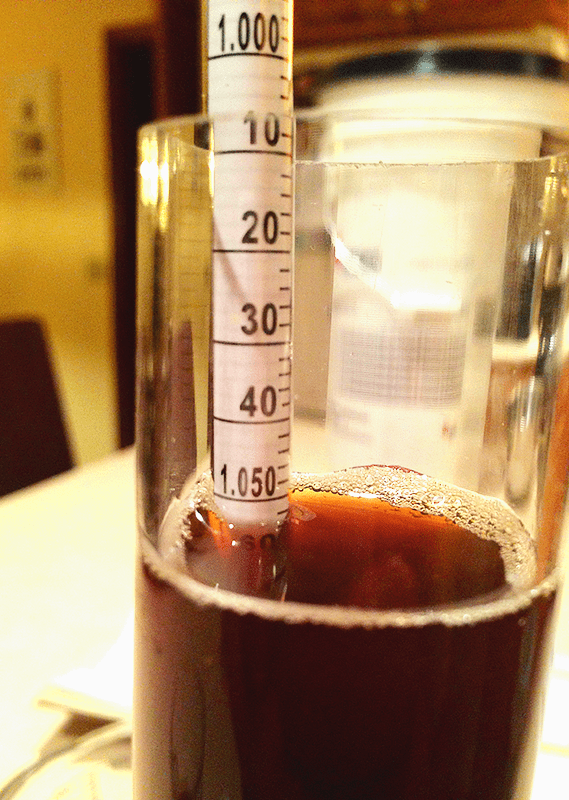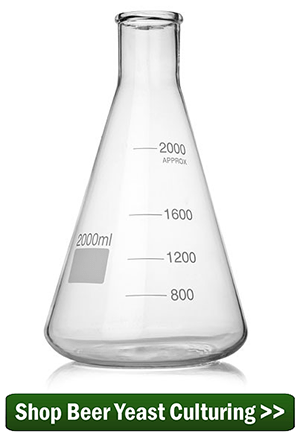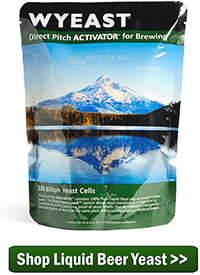 So you’re sitting there with your beer in the secondary fermenter and expecting to bottle when what do you know – that beer you expected to finish around 1.010 on the hydrometer is still hanging out at 1.050. The beer yeast brought the gravity down by a mere ten points! What we have here is a stuck beer fermentation.
So you’re sitting there with your beer in the secondary fermenter and expecting to bottle when what do you know – that beer you expected to finish around 1.010 on the hydrometer is still hanging out at 1.050. The beer yeast brought the gravity down by a mere ten points! What we have here is a stuck beer fermentation.
This is where meticulous note taking comes in handy. When things don’t go the way you want them to, your notes can point you towards the source of the problem.
Let’s see if we can figure out what went wrong.
What Is a Stuck Beer Fermentation and Why Does It Happen?
Fermentation is a process conducted by beer yeast, a living organism. Yeast requires certain conditions for the fermentation to take place, and if those conditions aren’t met, the fermentation can stop well before it should. Most beers will finish at 1.020 or lower, so if your beer stops fermenting at 1.030 or higher, you may have a stuck beer fermentation.
Here are a few of the reasons why your beer is not fermenting:
- Not enough yeast – The yeast was under-pitched, so that is there weren’t enough yeast cells to fully ferment the wort.
- Wort too hot when yeast was pitched – If the wort was too hot, it could have shocked or killed the beer yeast.
- Wort in wrong temperature range – If your fermenter is too hot or too cold, it could kill the yeast or put them in a dormant state.
- Under-aerated wort – Yeast needs oxygen in order to reproduce to a level where there are enough healthy cells to ferment the wort.
- Old beer yeast (not viable) – If your beer yeast sat on the shelf for too long or was stored improperly, the yeast could have deteriorated. Check the dates on the yeast packets when you buy them and make sure they are stored in the refrigerator.
- Yeast quit due to alcohol content – This could happen if brewing a very high gravity beer. Beer yeast commonly have a certain alcohol tolerance based on the strain. If you’ve exceeded the tolerance, then this could cause a stuck beer fermentation.
- Lack of nutrition – Malt provides nutrition for yeast growth, so a stuck beer fermentation sometimes happens when brewing beers with lots of simple sugar adjuncts.

How to Prevent a Stuck Beer Fermentation
The first step towards fixing a stuck fermentation is prevention. These are three of the best ways to prevent a stuck fermentation:
- Use only fresh, healthy beer yeast – When buying yeast, check the date on the yeast packet to make sure it’s fresh.
- Prepare a yeast starter – Yeast starters are highly recommend when using liquid yeasts. (Check out our step-by-step guide to Yeast Starters.)
- Chill your wort to the appropriate pitching temperature – This will prevent any temperature shock. Check the yeast package for appropriate pitching temperature and allow the yeast to come to room temperature before pitching. (Read our post Why and How to Chill Your Wort for more information.)
- Thoroughly aerate your wort – Pour the wort vigorously into the fermenter and/or stir well with a sanitized stirring spoon.
- Use yeast nutrient – If brewing a high gravity beer or a beer with high amounts of simple sugars, yeast nutrient can give the yeast an extra boost.
How to Fix a Stuck Beer Fermentation
This is the hard part. It’s very difficult to revive yeast that isn’t doing its job, and it may take some detective work to figure out the best course of action. These are a few of the approaches one could take to fix a stuck beer fermentation:
- Check that the fermentation temperature is correct – Consult the yeast package for the optimal temperature range.

- Stir – Using a sanitized spoon, give the wort a good stir to see if you can revive the yeast that has settled out and get it back in to suspension.
- Pitch more yeast – You may want to pitch more yeast. (This is when having an extra packet of dry yeast in the refrigerator comes in handy!) It may help to try a different strain of yeast, especially for brewing high gravity beers.
- Pour your wort onto a yeast cake from another (recent) brew – This is a little unconventional, but it should do the trick. Pour your stuck wort over a yeast cake from a beer that you just racked to secondary. Just make sure what you’re mixing is relatively similar, if not identical. For instance, pouring a saison onto a witbier yeast cake will probably work out fine, but pouring a hefeweizen onto a Irish stout yeast cake will majorly affect your brew.
Now that you are familiar with a stuck beer fermentation and understand better the potential reasons why your beer is not fermenting, hopefully, you’ll never have to deal with one.
Have you ever had a stuck beer fermentation? Were you able to fix it? How did you do it?
—–
David Ackley is a beer writer, brewer, and self-described “craft beer crusader.” He holds a General Certificate in Brewing from the Institute of Brewing and Distilling and is founder of the Local Beer Blog.

I followed your suggestion and have added a packet of yeast to a stuck fermentation. This is Nottingham High Performance Ale Yeast.
I am attempting to ferment a dark ale advertised as 1056 SG and 1012 FG.
The Wyeast London Ale lll pitched at the beginning reached 1031 before refusing to go any further.
The Nottingham yeast has so far got this reduced to 1020 over 4 days and formed a new yeast head. I am hoping it will (albeit slowly) continue to near FG of 1012.
Do you think this will gradually ferment out if I leave it a few weeks?
I do not like continuously interfering with the Ale so do you think I could take weekly readings? There is a good yeast cake formed so it should protect it from air.
Thank you
Should be fine with all the info you gave.